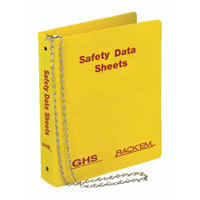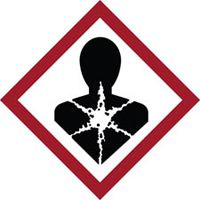| The Home page of ILPI's Safety Data Sheet (SDS) Resource, the leader in SDS information since 1995! | |
| The history and philosophy behind this resource. | |
| A curated collection of books and reference materials concerning Safety Data Sheets and closely related topics. | |
| Paste your plain text SDS into the SDS-Demystifier, and it will be converted into a hypertext-enriched document with links to detailed explanations of each key term. | |
| An extensive list of frequently asked questions about Safety Data Sheets including regulations, content, compliance, and more. | |
| A humorous take on Safety Data Sheet jargon. Fill in the blanks on our entry form to generate a personalized Unsafety Data Sheet to share with your coworkers. | |
| Since 1995, we've maintained this massive curated list of the best places to find Safety Data Sheets on the Internet. | |
| You are here! Way more than a glossary, this hypertext-enhanced resource covers hundreds of SDS-related terms and expert knowledge. Each entry includes both the SDS relevance and links to additional authoritative resources. | |
| Archived results of Safety Data Sheet related polls taken by some of our millions of site visitors | |
| The OSHA regulations behind SDS regulations, including the inspection guidelines and over 400 official interpretations letters under the Hazard Communication Standard | |
| Commercial suppliers of SDS authoring and management software as well as cloud compliance services. | |
| Commercial companies that will create SDS's for your specific needs as well as SDS translation companies. |

Safety signs, banners, and scoreboards? Get yours at Safety Emporium!

Get your SDS binders, centers and more from Safety Emporium.
Definition
A neoplasm is an abnormal growth of tissue that has no useful function. A synonym is "tumor".
Neoplastic is the adjective form of the word. For example a neoplastic disease is one that causes tumor growth.
Neoplasms may be benign (no ability to spread to other parts of the body) or malignant (cancerous).
Additional Info
The 2012 version of the OSHA Hazard Communication Standard, 29 CFR 1910.1200, requires manufacturers to perform a hazard classification on the potentially hazardous chemicals that they sell. Any hazards found in this process much be disclosed on the label and Safety Data Sheet.

Get your GHS-compliant labels and signs from Safety Emporium.
The health hazard classification process is described in Appendix A of HCS 2012. Paragraph A.6.1 of Appendix A defines a carcinogen as follows:
Carcinogen means a substance or a mixture of substances which induce cancer or increase its incidence. Substances and mixtures which have induced benign and malignant tumors in well-performed experimental studies on animals are considered also to be presumed or suspected human carcinogens unless there is strong evidence that the mechanism of tumor formation is not relevant for humans.
Classification of a substance or mixture as posing a carcinogenic hazard is based on its inherent properties and does not provide information on the level of the human cancer risk which the use of the substance or mixture may represent.
In summary, HCS 2012 treats any substance which causes neoplasms (tumors) to be a presumed or suspected human carcinogen without respect to the actual risk it may or may not pose. These substances will bear a health hazard pictogram like that shown on the right on the label (and, optionally, the SDS). Both the label and SDS will have accompanying hazard statements as well as precautionary statements.
SDS Relevance
Chronic (long-term) exposure to certain chemicals can result in the formation of neoplasms. While not all of these tumors are cancerous, benign tumors have the potential to interfere with vital body functions (for example, growing large enough to disrupt blood flow to an organ) or become malignant.
Section 11 (toxicological information) of a material's Safety Data Sheet will indicate if the material is known to cause tumor formation. Obviously, limit your exposure to any such chemical. This includes reducing the usage of such chemicals in your workplace as well as using proper personal protective equipment (PPE) such as gloves and respirators. And always utilize proper engineering controls such as fume hoods as these protect all workers, not just the end users. Section 8 (exposure controls/personal protection) of the SDS will contain information on these protective measures.
Further Reading

Signs, training materials and supplies from Safety Emporium can help ensure a safe and healthy workplace.
- Neoplasm Types and Factors That Cause Them at VeryWellHealth.
- What Is Neoplastic Disease? at Healthline.
- Neoplasm (Tumor) at Yale Medicine.
- Tumor and Metastasis at the NIH/NLM's MedLine Plus Medical Encyclopedia.
- The Carcinoid Cancer Foundation, Inc. for info about tumors that are somewhere between benign and malignant.
- What Is Cancer? at the American Cancer Society.
- Chemicals, Cancer, and You at the US CDC's ATSDR.
- Cancer-Causing Substances in the Environment at the NIH's National Cancer Institute.
- The US National Toxicology Program lists 248 agents, substances, mixtures, and exposure circumstances that are known or reasonably anticipated to cause cancer in humans in its 15th Report on Carcinogens.
- Scorecard mantains a Occupational Cancer - Carcinogen List at the CDC's NIOSH.
- Tumor Grade at MedicineNet.com.
See also: carinogen, carcinoma, cytotoxin, malignant, metastasis, mutagen, teratogen.